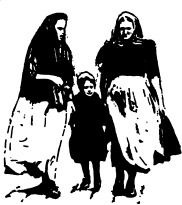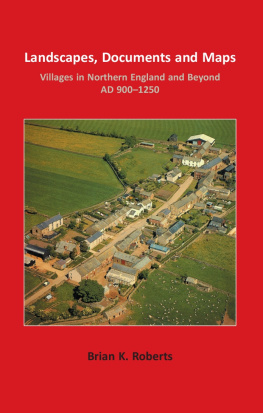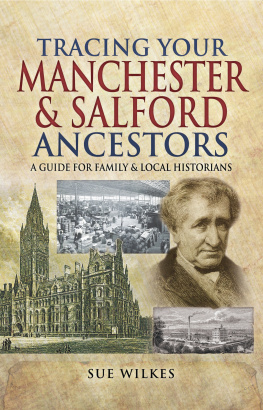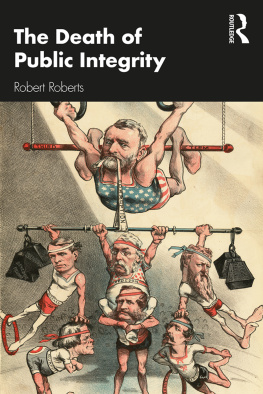PENGUIN BOOKS
THE CLASSIC SLUM
Robert Roberts was born in a Salford slum in 1905, the son of corner shopkeepers. After school he was an engineering apprentice for seven years, and was then unemployed for three years during which he studied languages and how to start a revolution. While a teacher he began to write stories, plays, BBC scripts and stories, several of which won him scholarships and awards. After sixteen years' hill farming, Robert Roberts started to teach in prisons and became an acknowledged expert on adult illiteracy. Until his death, he was a well-known lecturer on this subject, both in universities and on the BBC. His other books are Imprisoned Tongues and A Ragged Schooling.

The Classic Slum
SALFORD LIFE IN THE FIRST QUARTER OF THE CENTURY

ROBERT ROBERTS

PENGUIN BOOKS
PENGUIN BOOKS
Published by the Penguin Group
Penguin Books Ltd, 80 Strand, London WC2R 0RL , England
Penguin Group (USA) Inc., 375 Hudson Street, New York, New York 10014, USA
Penguin Group (Canada), 90 Eglinton Avenue East, Suite 700, Toronto, Ontario, Canada M4P 2Y3 (a division of Pearson Penguin Canada Inc.)
Penguin Ireland, 25 St Stephen's Green, Dublin 2, Ireland (a division of Penguin Books Ltd)
Penguin Group (Australia), 250 Camberwell Road, Camberwell, Victoria 3124, Australia (a division of Pearson Australia Group Pty Ltd)
Penguin Books India Pvt Ltd, 11 Community Centre, Panchsheel Park, New Delhi 110 017, India
Penguin Group (NZ), 67 Apollo Drive, Rosedale, North Shore 0632, New Zealand (a division of Pearson New Zealand Ltd)
Penguin Books (South Africa) (Pty) Ltd, 24 Sturdee Avenue, Rosebank, Johannesburg 2196, South Africa
Penguin Books Ltd, Registered Offices: 80 Strand, London WC2R 0RL , England
www.penguin.com
First published by the University of Manchester Press 1971
Published in Pelican Books 1978
Reprinted in Penguin Books 1990
Copyright Robert Roberts, 1971
All rights reserved
ISBN: 978-0-14-193235-4
To E. and A.,
who left early
Contents
Illustrations
The photographs, which have not been published before, were taken around the early 1900s by a Worsley man, Samuel Coulthurst, who went about Salford dressed as a rag and bone merchant with his camera concealed on a handcart.
Preface
M ANY writers of modern social history have described with sympathy, and with passion even, the plight of the undermass in pre-1914 industrial Britain, when the rich seemed never so wealthy nor the poor so poor. But such description has naturally lacked the factuality that first-hand experience might have given it; few historians are the sons of labourers. Young myself, and a dweller in that world of want when the century was new, I have written down some of what I saw, heard and experienced and set it in the context of the times, hopeful, in standing so close to the common scene, not to have distorted too much.
This is a book made much from talk, the talk first of men and women, fifty or more years ago, of ideas and views repeated in family, street, factory and shop, and borne in mind with intent! The corner shop, my first home, was a perfect spot for young intelligence to eavesdrop on life. Here, back and forth across the counters, slid the comedy, tragedy, hopes, fears and fancies of a whole community: here was market place and village well combined. Only a fool could have failed to learn in it. Then, and for long afterwards, I mixed with people, adult in Edwardian and Georgian days, who had lived out their time in ghettos spawned by the industrial revolution. Many among them, shrewd and thoughtful, could not only recapitulate experience, they knew how to assess its value in relation to their lives. Men discussed, argued, reminisced: I listened and remembered. To them all, many long gone now, I am indeed grateful for what they taught.
They're knocking our life and times away! said an elderly Mancunian. We stood together gazing over a wilderness on which still another vast slum had been razed, and he spoke in grief. A kind of culture unlikely to rise again had gone in the rubble, and he knew it. But most of the young who left such places had no such regrets: the old ways their fathers had accepted had long grown insupportable; better by far the cliff dwellings of modern Manchester. How life appeared in the slums which beset that great city during the early decades of the twentieth century I have tried in this book to show.
Thanks are due and recorded with gratitude to Mr Frank Mullineux, Keeper of the Monks Hall Museum, Eccles, for his kindness in allowing me to use photographs from his private collection.
R. R.
The Edwardian poor have attracted little attention in imaginative literature and play almost no part in commonly held images of Edwardian England. But to look at the domestic lives of the poor, both urban and rural, is to shadow our picture of upper- and middle-class life with horror and dismay.
M. Laski
CHAPTER 1

Class Structure
We are the mob, the working class, the proletariat
Song
No view of the English working class in the first quarter of this century would be accurate if that class were shown merely as a great amalgam of artisan and labouring groups united by a common aim and culture. Life in reality was much more complex. Socially the unskilled workers and their families, who made up about 50 per cent of the population in our industrial cities, varied as much from the manual lite as did people in middle station from the aristocracy. Before 1914 skilled workers generally did not strive to join a higher rank; they were only too concerned to maintain position within their own stratum. Inside the working class as a whole there existed, I believe, a stratified form of society whose implications and consequences have hardly yet been fully explored. Born behind a general shop in an area which, sixty years before, Frederick Engels had called the classic slum, I grew up in what was perhaps an ideal position for viewing the English proletarian caste system in all its late flower.
All Salford [wrote Engels in 1844] is built in courts or narrow lanes, so narrow that they remind me of the narrowest I have ever seen, in the little lanes of Genoa. The average construction of Salford is, in this respect, much worse than that of Manchester and so, too, in respect of cleanliness. If, in Manchester, the police, from time to time, every six or ten years, makes a raid upon the working-people's district, closes the worst dwellings, and causes the filthiest spots in these Augean stables to be cleansed, in Salford it seems to have done absolutely nothing.
For twenty years from 1850 Engels held interests in cotton mills on the western side of Manchester. This meant that on journeys between town and factory he had to pass through Salford; our village lay the greatest slum en route. One of his early mills (Ermen and Engels) stood in Liverpool Street, which ran through the heart of it. This is how Engels described our area in 1844:
The working-men's dwellings between Oldfield Road and Cross Lane (Salford), where a mass of courts and alleys are to be found in the worst possible state, vie with the dwellings of the Old Town in filth and overcrowding. In this district I found a man, apparently sixty years old, living in a cow-stable. He had constructed a sort of chimney for his square pen, which had neither windows, floor nor ceiling, had obtained a bedstead and lived there, though the rain dripped through his rotten roof. This man was too old and weak for regular work, and supported himself by removing manure with a hand-cart; the dung heaps lay next door to his palace.
Next page





















